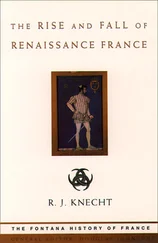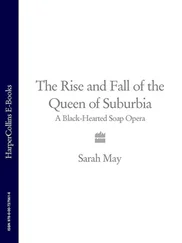Jared Diamond - The rise and fall of the third chimpanzee
Здесь есть возможность читать онлайн «Jared Diamond - The rise and fall of the third chimpanzee» весь текст электронной книги совершенно бесплатно (целиком полную версию без сокращений). В некоторых случаях можно слушать аудио, скачать через торрент в формате fb2 и присутствует краткое содержание. Год выпуска: 1991, ISBN: 1991, Издательство: RADIUS, Жанр: Биология, на английском языке. Описание произведения, (предисловие) а так же отзывы посетителей доступны на портале библиотеки ЛибКат.
- Название:The rise and fall of the third chimpanzee
- Автор:
- Издательство:RADIUS
- Жанр:
- Год:1991
- ISBN:0-09-174268-4
- Рейтинг книги:4 / 5. Голосов: 1
-
Избранное:Добавить в избранное
- Отзывы:
-
Ваша оценка:
- 80
- 1
- 2
- 3
- 4
- 5
The rise and fall of the third chimpanzee: краткое содержание, описание и аннотация
Предлагаем к чтению аннотацию, описание, краткое содержание или предисловие (зависит от того, что написал сам автор книги «The rise and fall of the third chimpanzee»). Если вы не нашли необходимую информацию о книге — напишите в комментариях, мы постараемся отыскать её.
The rise and fall of the third chimpanzee — читать онлайн бесплатно полную книгу (весь текст) целиком
Ниже представлен текст книги, разбитый по страницам. Система сохранения места последней прочитанной страницы, позволяет с удобством читать онлайн бесплатно книгу «The rise and fall of the third chimpanzee», без необходимости каждый раз заново искать на чём Вы остановились. Поставьте закладку, и сможете в любой момент перейти на страницу, на которой закончили чтение.
Интервал:
Закладка:
One indirect approach is to ask whether some people, deprived of the opportunity to hear any of our fully evolved, modern languages, ever spontaneously invented a primitive language. According to the Greek historian Herodotus, the Egyptian king Psammeticus intentionally carried out such an experiment in the hope of identifying the world's oldest language. The king assigned two newborn infants to a solitary shepherd to rear in strict silence, with instructions to listen for their first words. The shepherd duly reported that both children, after mouthing nothing but meaningless babble until the age of two, ran up to him and began constantly repeating the word becos. Since that word meant 'bread' in the Phrygian language then spoken in central Turkey, Psammeticus supposedly conceded that the Phrygians were the most ancient people. Unfortunately, Herodotus's brief account of Psammeticus's experiment fails to convince sceptics that it was carried out as rigorously as described. It illustrates why some scholars prefer to honour Herodotus as the Father of Lies, rather than as the Father of History. Certainly, solitary infants reared in social isolation, like the famous wolf boy of Aveyron, remain virtually speechless and do not invent or discover a language. However, a variant of the Psammeticus experiment has occurred dozens of times in the modern world. In this variant, whole populations of children heard adults around them speaking a grossly simplified and variable form of language, somewhat similar to that which normal children themselves speak at around the age of two years. The children proceeded unconsciously to evolve their own language, far advanced over vervet communication but simpler than normal human languages. The results were the new languages known as pidgins and Creoles, which may provide us with models of two missing links in the evolution of normal human language. My first experience of a Creole was with the New Guinea lingua franca known either as Neo-Melanesian or pidgin English. (The latter name is a confusing misnomer, since Neo-Melanesian is not a pidgin but rather a creole derived from an advanced pidgin -1 shall explain the difference later—and it is only one of many independently evolved languages equally misnamed as pidgin English.) Papua New Guinea boasts about 700 native languages within an area similar to that of Sweden, but no single one of those languages is spoken by more than three per cent of the population. Not surprisingly, a lingua franca was needed and it arose after the arrival of English-speaking traders and sailors in the early 1800s. Today, Neo-Melanesian serves in Papua New Guinea as the language not only of much conversation, but also of many schools, newspapers, radios, and parliamentary discussions. The advertisement in the appendix to this chapter (see pages 150-51) gives a sense of this newly evolved language.
When I arrived in Papua New Guinea and first heard Neo-Melanesian, I was scornful of it. It sounded like long-winded, grammarless baby-talk. On speaking a form of English according to my own notion of baby-talk, I was disturbed to discover that New Guineans did not understand me. My assumption that Neo-Melanesian words meant the same as their English cognates led to spectacular disasters, notably when I tried to apologize to a woman in her husband's presence for accidentally jostling her, only to find that Neo-Melanesian pushim does not mean 'push' but instead means 'have sexual intercourse with'.
Neo-Melanesian proved to be as strict as English in its grammatical rules. It was a subtle language that let one express anything sayable in English. It even let one make some distinctions that cannot be expressed in English except by means of clumsy circumlocutions. For example, the English pronoun 'we' actually lumps together two quite different concepts: 'I, plus you to whom I am speaking', and 'I, plus one or more other people, but not including you to whom I am speaking'. In Neo-Melanesian these two separate meanings are expressed by the words yumi and mipela respectively. After I have been using Neo-Melanesian for a few months and then meet an English-speaker who starts talking about we', I often find myself wondering, 'am I included or not in your "we"? Neo-Melanesian's deceptive simplicity and actual suppleness stem partly from its vocabulary, partly from its grammar. Its vocabulary is based on a modest number of core words whose meaning varies with context and becomes extended metaphorically. For instance, while Neo-Melanesian gras can mean English 'grass' (whence gras bilong solwara [salt water] means 'seaweed'), it also can mean 'hair' (whence man i no gat gras long head bilong em becomes 'bald man').
[Пропущены страницы 140–141]
for colonists and workers who speak differing native (first) languages and need to communicate with each other. Each group (colonists or workers) retains its native language for use within its own group; each group uses the pidgin to communicate with the other group, and in addition workers on a polyglot plantation may use pidgin to communicate with other groups of workers. An illustration of how quickly pidgins may arise is given by my own experience soon after I first arrived in Indonesia. An Indonesian worker and I were dropped together by helicopter in an uninhabited mountain range to survey birds. We had no Indonesian/ English dictionary, knew nothing of each other's language, and could teach each other words only by pointing. Within a week we had evolved a crude pidgin, based solely on Indonesian nouns, to communicate about camp chores: for instance rice fire meant 'to cook rice', while bird binoculars meant 'to watch birds'.
Compared to normal languages, pidgins are greatly impoverished in their sounds, vocabulary, and syntax. A pidgin's sounds are generally only those common to the two or more native languages thrown together. For example, many New Guineans find it hard to pronounce our consonants/ and v, but I and other native English speakers find it hard to pronounce the vowel tones and nasalized sounds rampant in many New Guinean languages. Such sounds became largely excluded from New Guinean pidgins and then from the Neo-Melanesian Creole that developed from them. Words of early-stage pidgins consist largely of nouns, verbs, and adjectives, with few or no articles, auxiliary verbs, conjunctions, prepositions, or pronouns. As for grammar, early-stage pidgin discourse typically consists of short strings of words with little phrase construction, no regularity in word order, no subordinate clauses, and no inflectional endings on words. Together with that impoverishment, variability of speech within and between individuals is a hallmark of early-stage pidgins, which approximate an anarchic linguistic free-for-all.
Pidgins that are used only casually by adults who otherwise retain their own separate native languages persist at this rudimentary level. For example, a pidgin known as Russonorsk grew up to facilitate barter between Russian and Norwegian fishermen who encountered each other in the Arctic. That lingua franca persisted throughout the Nineteenth Century but never developed further, as it was used only to transact simple business during brief visits. Both those groups of fishermen spent most of their time speaking Russian or Norwegian with their compatriots. In New Guinea, on the other hand, the pidgin gradually became more regular and complex over many generations because it was used intensively on a daily basis, but most children of New Guinean workers continued to learn their parents' native languages as their first language until after the Second World War.
However, pidgins evolve rapidly into Creoles when a generation of one of the groups contributing to a pidgin begins to adopt the pidgin itself as its native language. That generation then finds itself using pidgin for all social purposes, not only for discussing plantation tasks or bartering. Compared to pidgins, Creoles have a larger vocabulary, much more complex grammar, and consistency within and between individuals. Creoles can express virtually any thought expressible in a normal language, whereas trying to say anything even slightly complex is a desperate struggle in pidgin. Somehow, without any equivalent of the Academic Francaise to lay down explicit rules, a pidgin expands and stabilizes to become a uniform and more sophisticated language. This process of creolization is a natural experiment in language evolution that has unfolded independently dozens of times in the modern world. The sites for the experiment have ranged from mainland South America and Africa to Pacific islands; the labourers, from Africans and Portuguese to Chinese and New Guineans; the dominant colonists, from English and Spaniards to other Africans and Portuguese; and the century, from at least the Seventeenth to the Twentieth. What is striking is that the linguistic outcomes of all these independent natural experiments share so many similarities, both in what they lack and in what they possess. On the negative side, Creoles are simpler than normal languages in that they usually lack conjugations of verbs for tense and person, declensions of nouns for case and number, most prepositions, distinctions between events in the past and present, and agreement of words for gender. On the positive side, Creoles are advanced over pidgins in many respects: consistent word order; singular and plural pronouns for the first, second, and third persons; relative clauses; indications of the anterior tense (describing actions occurring before the time under discussion, whether or not that time is the present); and particles or auxiliary verbs preceding the main verb and indicating negation, anterior tense, conditional mood, and continuing as opposed to completed actions. Furthermore, most Creoles agree in placing a sentence's subject, verb, and object in that particular order, and also agree in the order of particles or auxiliaries preceding the main verb.
Читать дальшеИнтервал:
Закладка:
Похожие книги на «The rise and fall of the third chimpanzee»
Представляем Вашему вниманию похожие книги на «The rise and fall of the third chimpanzee» списком для выбора. Мы отобрали схожую по названию и смыслу литературу в надежде предоставить читателям больше вариантов отыскать новые, интересные, ещё непрочитанные произведения.
Обсуждение, отзывы о книге «The rise and fall of the third chimpanzee» и просто собственные мнения читателей. Оставьте ваши комментарии, напишите, что Вы думаете о произведении, его смысле или главных героях. Укажите что конкретно понравилось, а что нет, и почему Вы так считаете.












